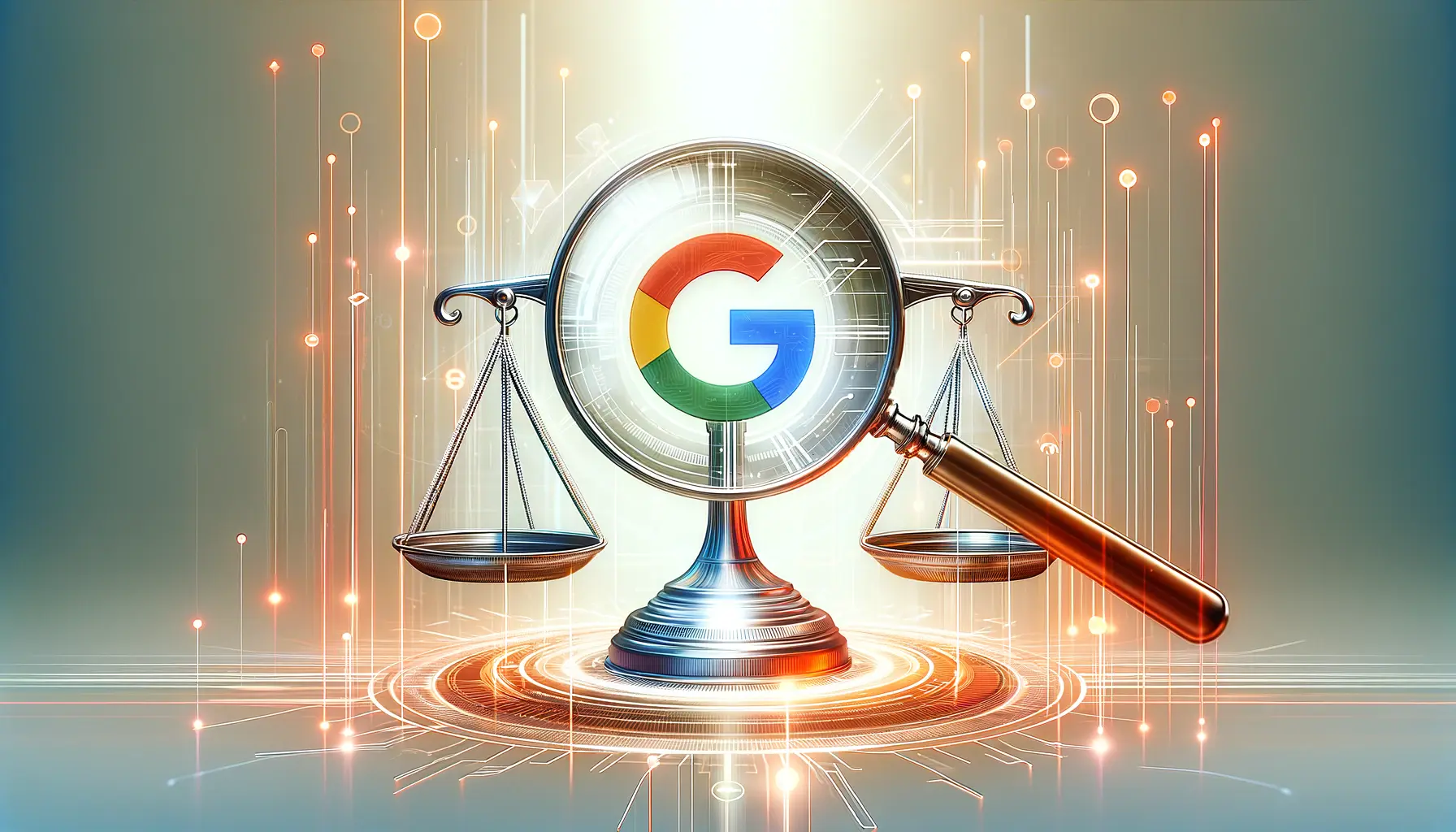In the digital age, where every click and view can be the difference between a client won or lost, legal firms are increasingly turning to sophisticated SEO strategies to stand out.
Among these strategies, Image SEO emerges as a pivotal yet often overlooked component, especially within the realm of legal services.
This article delves into the nuanced role of image optimization in enhancing a law firm’s online presence, ensuring that potential clients find them not just through text-based searches but through the visual queries as well.
At its core, Image SEO for legal marketing is about making your firm’s visual content discoverable, engaging, and impactful.
With the right approach, images can do more than just beautify a website; they can drive traffic, convey trustworthiness, and even improve conversion rates.
As we navigate through the intricacies of Image SEO, it becomes clear that this is not just about getting images to rank on search engines.
It’s about integrating them seamlessly into your overall SEO strategy to enhance your firm’s visibility and appeal to a broader audience.
- Understanding Image SEO and Its Importance
- Strategies for Optimizing Images on Your Law Firm’s Website
- Technical SEO Considerations for Image Optimization
- Integrating Images into Content Strategy
- Measuring the Impact of Image SEO
- Advanced Image SEO Techniques
- Future Trends in Image SEO for Legal Marketing
- Maximizing Your Law Firm’s Visibility with Image SEO
- Image SEO in Legal Marketing FAQs
Understanding Image SEO and Its Importance
Image SEO refers to the optimization of graphics on your law firm’s website to ensure they are indexed and rank well on search engine results pages (SERPs).
This process involves various techniques, including proper file naming, use of alt attributes, and ensuring images are responsive and load quickly.
The goal is to make these images visible in both traditional and image-specific searches, thereby driving more traffic to your site.
Why is this important for legal firms?
In an industry where credibility and professionalism are paramount, images can significantly influence a potential client’s first impression.
High-quality, optimized images can showcase your firm’s expertise, humanize your attorneys, and make complex legal concepts more accessible.
Moreover, with the increasing reliance on visual content across the web, neglecting Image SEO means missing out on a vital opportunity to connect with your audience.
Key Components of Effective Image SEO
Effective Image SEO for legal marketing hinges on several key components.
First and foremost is the selection of relevant, high-quality images that reflect your firm’s brand and the services you offer.
Whether it’s professional portraits of your legal team, images that depict your areas of specialization, or infographics that break down legal processes, each image should serve a purpose.
Next, optimizing these images for search engines is crucial.
This includes using descriptive, keyword-rich file names and alt text, which not only aids in indexing but also improves accessibility for users with visual impairments.
Additionally, ensuring your images are the correct size and format can significantly reduce page load times, enhancing user experience and SEO performance alike.
Incorporating Image SEO into your legal marketing strategy can dramatically improve your online visibility, making your firm more accessible and appealing to potential clients.
Benefits of Image SEO for Legal Firms
The benefits of implementing a robust Image SEO strategy are manifold.
For one, it can lead to higher rankings in both traditional and image search results, increasing your firm’s visibility.
This heightened visibility translates to more website traffic, which, with the right conversion strategies in place, can lead to more client inquiries and cases.
Moreover, optimized images can enhance the overall user experience on your website.
Fast-loading, high-quality images can reduce bounce rates and encourage users to spend more time exploring your content.
This not only aids in SEO but also builds trust with potential clients, showcasing your firm’s professionalism and attention to detail.
Strategies for Optimizing Images on Your Law Firm’s Website
Optimizing images for your law firm’s website involves a blend of technical adjustments and strategic planning.
The aim is to ensure that your images contribute positively to your site’s SEO, user experience, and conversion rates.
Here are some effective strategies to achieve this:
Choosing the Right Images
Selecting the appropriate images is the first step towards effective Image SEO.
Images should be:
- Relevant: Directly related to the content they accompany, enhancing the message rather than distracting from it.
- High-quality: Clear, crisp, and professionally presented to reflect the professionalism of your firm.
- Engaging: Capable of capturing the attention of your audience and encouraging them to learn more about your services.
Optimizing Image Files
Once you have selected the right images, the next step is to optimize them for the web.
This includes:
- Compressing images to reduce file size without compromising quality, thus improving page load times.
- Choosing the correct file format (e.g., JPEG for photos, PNG for graphics with transparent backgrounds) to balance quality and file size.
- Using descriptive file names that include relevant keywords to improve search engine indexing and relevance.
Enhancing Accessibility and Indexing
To ensure your images are accessible to all users and easily indexed by search engines, consider the following:
- Adding descriptive alt text to each image, which helps visually impaired users understand the content and aids in search engine indexing.
- Implementing structured data for images where appropriate, to provide search engines with more context and improve the chances of appearing in rich snippets.
Remember, optimizing your images for SEO doesn’t just help with search engine rankings; it also enhances the user experience, making your website more accessible and engaging for potential clients.
Utilizing Social Media and External Platforms
Don’t limit your optimized images to your website alone.
Sharing them on social media and other external platforms can:
- Increase your firm’s visibility and brand recognition.
- Drive additional traffic to your website through direct links and improved search engine rankings.
- Encourage engagement and shares, further amplifying your reach.
By following these strategies, you can ensure that your law firm’s website not only ranks well in search engine results but also provides a compelling and accessible experience for all visitors.
Technical SEO Considerations for Image Optimization
While the strategic selection and use of images are crucial, the technical aspects of Image SEO cannot be overlooked.
These technical considerations ensure that your images are fully optimized to contribute to your law firm’s SEO efforts effectively.
Responsive Images for Mobile Optimization
With the increasing use of mobile devices to access the internet, ensuring your images are responsive is essential.
Responsive images adjust to fit the screen size of the device being used, providing a better user experience and improving SEO.
To achieve this, you should:
- Use HTML’s
srcsetattribute to specify different image versions for different screen sizes. - Implement the
sizesattribute to define the space the image will take up in different layouts. - Test your images on various devices and browsers to ensure they load correctly and quickly.
Image Sitemaps for Better Indexing
Creating an image sitemap can significantly improve the indexing of your images by search engines.
An image sitemap is an XML sitemap exclusively for images, which helps search engines discover images that might not be found through traditional crawling methods.
To create an effective image sitemap, you should:
- Include URLs for all images you want to be indexed.
- Provide additional details for each image, such as caption, title, geo-location, and license information, to improve relevance.
- Submit your image sitemap to Google via the Search Console for faster indexing.
Leveraging CDN for Faster Image Loading
Content Delivery Networks (CDNs) can significantly reduce image loading times by storing copies of your images on servers around the world.
When a user visits your site, images are delivered from the server closest to them, reducing load times.
Implementing a CDN involves:
- Choosing a reputable CDN provider that integrates well with your website’s infrastructure.
- Optimizing images before uploading them to the CDN to ensure they are of the appropriate size and format.
- Regularly monitoring CDN performance and making adjustments as needed to maintain fast loading times.
Technical SEO for images is a critical component of your overall SEO strategy. By focusing on mobile optimization, creating image sitemaps, and leveraging CDNs, you can ensure that your images significantly contribute to your law firm’s online success.
Optimizing Alt Text for SEO and Accessibility
Alt text plays a dual role in improving both SEO and accessibility.
Writing effective alt text involves:
- Being descriptive and concise, accurately reflecting the content of the image.
- Including relevant keywords naturally, without keyword stuffing.
- Considering the user experience of visually impaired visitors who rely on screen readers to understand image content.
By addressing these technical SEO considerations, you can enhance your law firm’s website performance, both in terms of search engine rankings and user experience.
Integrating Images into Content Strategy
Integrating images into your law firm’s content strategy is not just about adding visual appeal; it’s about enhancing the message and value of your content.
Images, when used strategically, can significantly increase engagement, comprehension, and action from your audience.
Here’s how to effectively incorporate images into your content strategy:
Aligning Images with Your Content Goals
Every image you choose should serve a specific purpose in your content strategy.
Whether it’s to illustrate a complex legal concept, showcase your team’s professionalism, or evoke an emotional response, your images should align with the goals of your content.
Consider the following when selecting images:
- Relevance: Ensure the image directly relates to the content topic, enhancing the reader’s understanding or interest.
- Brand consistency: Images should reflect your law firm’s brand identity and values, contributing to a cohesive online presence.
- Action-oriented: Use images that encourage readers to take action, whether it’s contacting your firm, reading more content, or sharing on social media.
Enhancing Blog Posts and Articles with Images
Blog posts and articles are prime candidates for image optimization.
Incorporating images can break up text, making content more digestible and engaging.
To maximize the impact, ensure that:
- Images are placed strategically throughout the content to maintain reader interest and illustrate key points.
- Each image is optimized for SEO, with descriptive file names and alt text that includes relevant keywords.
- Visual variety is considered, using a mix of photographs, infographics, and charts to cater to different reader preferences.
Using Images to Boost Social Media Engagement
Social media platforms are inherently visual, making images a critical component of your law firm’s social media strategy.
To enhance engagement on social media, you should:
- Choose eye-catching, high-quality images that stand out in crowded social media feeds.
- Include your law firm’s logo or branding elements subtly to increase brand recognition.
- Use images to tease content, encouraging followers to visit your website for more information.
Consider creating a library of branded images and graphics that can be used across your website and social media channels. This not only saves time but also ensures consistency in your visual content.
Optimizing Images for Email Marketing Campaigns
Email marketing is another area where images can play a powerful role.
Optimized images in emails can increase open rates, engagement, and conversions.
To achieve this, ensure that:
- Images are properly formatted and sized for email, preventing slow loading times or display issues.
- Alt text is used for each image, providing context for recipients whose email clients block images by default.
- Images complement the email content, reinforcing the message without overwhelming the text.
By thoughtfully integrating images into your content strategy, you can enhance the effectiveness of your law firm’s marketing efforts, driving more engagement and conversions across all channels.
Measuring the Impact of Image SEO
Understanding the effectiveness of your Image SEO efforts is crucial for refining your strategy and maximizing your law firm’s online visibility.
By measuring the impact of your optimized images, you can identify what works, what doesn’t, and where there’s room for improvement.
Here’s how to track and analyze the performance of your Image SEO:
Utilizing Analytics Tools
Analytics tools like Google Analytics offer invaluable insights into how users interact with the images on your site.
Key metrics to monitor include:
- Page views: Determine if pages with optimized images are receiving more views compared to those without.
- Bounce rate: Analyze whether images are helping to keep visitors on your site longer, thereby reducing bounce rates.
- Conversion rate: Track conversions from pages with optimized images to see if there’s a direct impact on client inquiries or contact form submissions.
Monitoring Image Search Rankings
Regularly check how your images rank in search engine results for targeted keywords.
Improvements in rankings can indicate successful optimization.
Tools like Google Search Console can provide detailed reports on image search performance, including impressions, clicks, and position in search results.
Assessing Engagement and Social Shares
Images that resonate with your audience are more likely to be shared across social media platforms, driving additional traffic to your site.
Monitor social shares and engagement metrics to gauge the appeal of your images.
High levels of engagement can also provide insights into the types of images that best resonate with your target audience, guiding future content creation.
The true value of Image SEO lies not just in improved search rankings but in creating a more engaging and accessible website for potential clients.
Gathering User Feedback
Direct feedback from users can offer qualitative insights into how your images are perceived.
Consider conducting surveys or gathering feedback through social media to understand user reactions to your images.
This feedback can highlight areas for improvement and inform your ongoing Image SEO strategy.
By measuring the impact of your Image SEO efforts through these methods, you can make data-driven decisions to enhance your law firm’s online presence and effectiveness in reaching potential clients.
Advanced Image SEO Techniques
For law firms looking to push their Image SEO strategy further, several advanced techniques can be employed.
These methods go beyond the basics, diving deeper into the optimization process to maximize visibility and engagement.
Implementing these advanced techniques can set your firm apart in a competitive digital landscape.
Image Schema Markup
Schema markup is a powerful tool for telling search engines exactly what your content is about, and this includes images.
By adding schema markup to your images, you can provide search engines with detailed information, such as the image’s creator, license, and more.
This not only helps with indexing but can also improve the chances of your images appearing in rich snippets and other enhanced search results.
Implementing image schema markup involves:
- Identifying the most appropriate schema type for your images (e.g., ImageObject, Photograph).
- Using a tool like Google’s Structured Data Markup Helper to generate the correct markup.
- Adding the generated schema markup to your website’s HTML.
Optimizing for Visual Search
As technology advances, visual search is becoming increasingly popular, with platforms like Google Lens allowing users to search the web using images instead of words.
To optimize for visual search, law firms should:
- Ensure images are high-quality and clearly depict the subject matter.
- Include detailed, keyword-rich file names and alt text to help search engines understand the image content.
- Consider the context in which images are used on your site, as this can affect how they’re indexed and displayed in visual search results.
Leveraging Image Engagement for SEO
Engagement metrics such as clicks, shares, and time spent on page can indirectly influence your SEO.
To leverage image engagement:
- Encourage users to interact with your images through calls to action, such as sharing on social media or clicking for a larger view.
- Use analytics to track which images are most engaging and refine your strategy based on this data.
- Incorporate interactive elements, like image galleries or before-and-after sliders, to increase time spent on page.
Assuming all images have the same impact on SEO is a common misconception. Advanced techniques are necessary to fully harness the power of Image SEO.
Continuous Testing and Optimization
The digital landscape is ever-changing, and what works today may not work tomorrow.
Continuous testing and optimization are key to staying ahead.
This includes:
- A/B testing different images and formats to see what performs best.
- Regularly updating images to keep content fresh and engaging.
- Staying informed about the latest SEO trends and algorithm updates to adjust your strategy accordingly.
By adopting these advanced Image SEO techniques, law firms can significantly enhance their online visibility, attract more potential clients, and establish a strong digital presence.
Future Trends in Image SEO for Legal Marketing
The landscape of Image SEO is continually evolving, influenced by technological advancements, changes in search engine algorithms, and shifts in user behavior.
For law firms aiming to stay ahead in digital marketing, understanding and anticipating future trends in Image SEO is crucial.
Here are some developments that are likely to shape the future of Image SEO in legal marketing:
AI and Machine Learning
Artificial intelligence (AI) and machine learning are set to play a significant role in how images are indexed and ranked by search engines.
These technologies can analyze images with incredible accuracy, understanding context, content, and even sentiment.
For law firms, this means:
- Optimizing images will require a deeper focus on the quality and relevance of visual content.
- AI-generated images and infographics may become more prevalent, offering new ways to present complex legal information visually.
- Search engines may begin to prioritize images that are not only optimized for SEO but also for user engagement and satisfaction.
Increased Importance of Visual Search
As visual search technologies like Google Lens become more sophisticated and widely used, the importance of optimizing images for visual search will grow.
Law firms will need to:
- Ensure images are clear, high-resolution, and accurately represent their content.
- Adopt advanced SEO techniques, such as detailed schema markup, to provide search engines with more context about images.
- Consider the user intent behind visual searches and optimize images to meet these needs.
Integration with Voice Search
With the rise of voice-activated assistants, the integration of image search with voice search is an emerging trend.
Users may soon be able to describe what they’re looking for verbally and be presented with relevant images.
Law firms can prepare for this by:
- Optimizing image file names, alt text, and captions with natural language keywords.
- Incorporating voice search keywords into image metadata to improve discoverability.
- Creating content that answers common questions visually, making it more likely to be returned in voice-activated image searches.
Staying abreast of these future trends and incorporating them into your Image SEO strategy can help your law firm not only maintain but enhance its online visibility and engagement.
Sustainability and Ethical Considerations
As digital consumption grows, so does the environmental impact of online activities, including image hosting and sharing.
Future Image SEO strategies may need to consider sustainability, focusing on optimizing image sizes and formats to reduce data transfer and storage requirements.
Ethical considerations, such as respecting copyright and privacy when using images, will also remain paramount.
By anticipating and adapting to these future trends, law firms can ensure their Image SEO strategies remain effective and forward-thinking, helping them to stand out in an increasingly competitive digital landscape.
Maximizing Your Law Firm’s Visibility with Image SEO
In the realm of legal marketing, where competition is fierce and the digital landscape ever-evolving, the importance of Image SEO cannot be overstated.
As we’ve explored, optimizing images is not merely about enhancing your website’s aesthetic appeal but about leveraging every visual element to improve your online presence, engage potential clients, and ultimately, drive conversions.
The journey through the nuances of Image SEO has illuminated its critical role in a comprehensive digital marketing strategy for law firms.
The Strategic Edge of Image Optimization
Image SEO offers a strategic edge, enabling law firms to stand out in a crowded market.
By meticulously selecting, optimizing, and integrating images into their online content, law firms can achieve higher search engine rankings, attract more site visitors, and provide a richer user experience.
The benefits extend beyond visibility, fostering trust and credibility among potential clients through professional, relevant, and engaging visual content.
Embracing Future Trends
Looking ahead, the landscape of Image SEO is set to evolve, shaped by advancements in AI, machine learning, and visual search technologies.
Law firms that anticipate and adapt to these changes will not only maintain their competitive edge but will set new standards in legal marketing.
The integration of Image SEO with emerging trends like voice search and ethical considerations reflects a forward-thinking approach that prioritizes both innovation and responsibility.
- AI and machine learning will refine how images are indexed, emphasizing the quality and relevance of visual content.
- Visual search capabilities will necessitate a focus on high-resolution, clear images that accurately represent their subject matter.
- The convergence of image and voice search will require optimization strategies that cater to natural language queries and voice-activated searches.
In conclusion, Image SEO in legal marketing is a dynamic and multifaceted strategy that extends far beyond basic optimization techniques.
It demands a proactive, informed approach that keeps pace with technological advancements and changing user behaviors.
For law firms aiming to enhance their digital marketing efforts, investing in Image SEO is not just beneficial; it’s imperative.
By doing so, they can ensure their online presence is not only visible but vibrant, engaging, and ultimately, more effective in connecting with potential clients.
Want your website to top Google search rankings? Leave the SEO to our professional agency!
Image SEO in Legal Marketing FAQs
Delving into the realm of Image SEO within legal marketing unveils a plethora of queries. Here, we address some of the most frequently asked questions to shed light on this crucial aspect of digital marketing for law firms.
Image SEO in legal marketing involves optimizing images on law firm websites to improve visibility in search engine results, enhancing user engagement and site traffic.
It increases a law firm’s online presence, helps attract more site visitors, and improves user experience by ensuring images are relevant and load quickly.
By using descriptive file names, alt tags filled with relevant keywords, ensuring images are the correct size, and utilizing image sitemaps for better indexing.
Alt tags provide a text alternative for images, aiding in accessibility for visually impaired users and helping search engines understand and index the image content.
Yes, effectively optimized images can significantly contribute to a law firm’s overall SEO strategy, potentially improving its search engine rankings.
Mobile optimization ensures images load quickly and display correctly on mobile devices, crucial for maintaining user engagement and SEO performance.
Advanced techniques include using image schema markup, optimizing for visual search, and leveraging engagement metrics to inform ongoing optimization strategies.
Law firms should keep an eye on AI and machine learning, the growing importance of visual search, and the integration of image content with voice search technologies.















